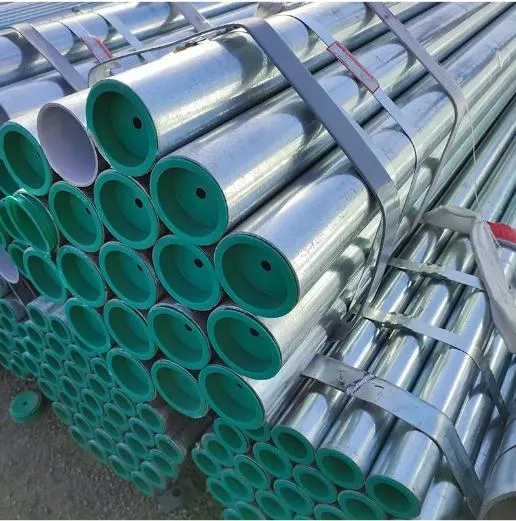-
Cangzhou Yulong Steel Co., Ltd.
-
Phone:
+86 13303177267 -
Email:
admin@ylsteelfittings.com
- English
- Arabic
- Italian
- Spanish
- Portuguese
- German
- kazakh
- Persian
- Greek
- French
- Russian
- Polish
- Thai
- Indonesian
- Vietnamese
- Zulu
- Korean
- Uzbek
- Hindi
- Serbian
- Malay
- Ukrainian
- Gujarati
- Haitian Creole
- hausa
- hawaiian
- Hebrew
- Miao
- Hungarian
- Icelandic
- igbo
- irish
- Japanese
- Javanese
- Kannada
- Khmer
- Rwandese
- Afrikaans
- Albanian
- Amharic
- Armenian
- Azerbaijani
- Basque
- Belarusian
- Bengali
- Bosnian
- Bulgarian
- Catalan
- Cebuano
- China
- China (Taiwan)
- Corsican
- Croatian
- Czech
- Danish
- Esperanto
- Estonian
- Finnish
- Frisian
- Galician
- Georgian
- Kurdish
- Kyrgyz
- Lao
- Latin
- Latvian
- Lithuanian
- Luxembourgish
- Macedonian
- Malgashi
- Malayalam
- Maltese
- Maori
- Marathi
- Mongolian
- Myanmar
- Nepali
- Norwegian
- Norwegian
- Occitan
- Pashto
- Dutch
- Punjabi
- Romanian
- Samoan
- Scottish Gaelic
- Sesotho
- Shona
- Sindhi
- Sinhala
- Slovak
- Slovenian
- Somali
- Sundanese
- Swahili
- Swedish
- Tagalog
- Tajik
- Tamil
- Tatar
- Telugu
- Turkish
- Turkmen
- Urdu
- Uighur
- Welsh
- Bantu
- Yiddish
- Yoruba

Dec . 19, 2024 17:17 Back to list
stainless steel threaded fittings
Understanding Stainless Steel Threaded Fittings A Comprehensive Guide
Stainless steel threaded fittings are crucial components in many industrial applications, offering strength, durability, and resistance to corrosion. Their role in piping systems cannot be overstated as they serve as connectors, allowing different sections of pipes to join seamlessly. This article will explore the characteristics, types, applications, and advantages of stainless steel threaded fittings.
Characteristics of Stainless Steel Threaded Fittings
Stainless steel is an alloy primarily composed of iron, carbon, and a minimum of 10.5% chromium. This composition gives stainless steel its remarkable corrosion resistance, making it ideal for environments that experience moisture and harsh conditions. The following characteristics make stainless steel threaded fittings a preferred choice
1. Corrosion Resistance The presence of chromium in stainless steel forms a passive layer of chromium oxide on the surface, which protects the material from rust and corrosion.
2. Durability Stainless steel fittings can withstand extreme temperatures and pressures, ensuring a long lifespan in various applications.
3. Aesthetic Appeal These fittings have a sleek and polished surface, providing an aesthetic value, particularly in exposed piping systems.
4. Hygiene Stainless steel is non-porous, making it easy to clean and maintain. This property is particularly important in industries such as food and beverage, pharmaceuticals, and healthcare.
Types of Stainless Steel Threaded Fittings
Stainless steel threaded fittings come in various types, each designed for specific functions within piping systems
1. Elbows These fittings facilitate directional changes in piping, available in various angles, commonly 90 and 45 degrees.
2. Tees Tees allow for branching off from the main line, creating a Y-shaped configuration. They are essential for splitting or merging flows.
3. Couplings Used to connect two pieces of pipe, couplings can be used to extend pipe lengths or repair broken fittings.
5. Bushings and Adapters These fittings change the size or type of connection, accommodating different pipe diameters or threading types.
stainless steel threaded fittings

Applications of Stainless Steel Threaded Fittings
Stainless steel threaded fittings are used across various industries due to their versatility. Common applications include
- Chemical Processing These fittings are widely used in chemical plants, where corrosive substances are prevalent. Their resistance to corrosion ensures minimal maintenance and downtime.
- Oil and Gas In the oil and gas sector, stainless steel threaded fittings are essential for pipeline systems that transport crude oil and natural gas.
- Water and Wastewater Management The fittings are critical in water treatment facilities, ensuring that systems remain leak-free and efficient.
- Food and Beverage Industry Their hygienic nature makes stainless steel threaded fittings ideal for food production and processing systems.
- Pharmaceuticals The pharmaceutical industry relies on stainless steel for its corrosion resistance and ease of cleaning, meeting stringent sanitary standards.
Advantages of Stainless Steel Threaded Fittings
The benefits of using stainless steel threaded fittings extend beyond their physical properties
1. Cost-Effectiveness Although the initial cost may be higher than other materials, the durability and longevity of stainless steel lead to reduced maintenance and replacement expenses.
2. Versatility Stainless steel fittings can be used in various environments and conditions, making them adaptable to multiple applications.
3. Environmentally Friendly Stainless steel is recyclable, reducing environmental impact. Its longevity further minimizes waste compared to materials requiring frequent replacement.
4. Low Maintenance The corrosion-resistant nature of stainless steel reduces the frequency of maintenance, allowing businesses to focus on core operations.
Conclusion
Stainless steel threaded fittings play an integral role in modern piping systems. Their unique properties, diverse types, and wide range of applications make them indispensable in numerous industries. By understanding their characteristics and advantages, businesses can make informed decisions when selecting fittings, ensuring efficiency, safety, and longevity in their operations.
Latest news
-
ANSI 150P SS304 SO FLANGE
NewsFeb.14,2025
-
ASTM A333GR6 STEEL PIPE
NewsJan.20,2025
-
ANSI B16.5 WELDING NECK FLANGE
NewsJan.15,2026
-
ANSI B16.5 SLIP-ON FLANGE
NewsApr.19,2024
-
SABS 1123 FLANGE
NewsJan.15,2025
-
DIN86044 PLATE FLANGE
NewsApr.19,2024
-
DIN2527 BLIND FLANGE
NewsApr.12,2024
-
JIS B2311 Butt-Welding Fittings LR/SR 45°/90° /180°Seamless/Weld
NewsApr.23,2024











